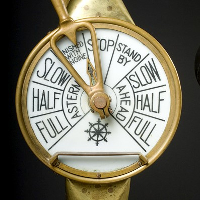There’s been an interesting long-term study on graduates. Those who prioritized wealth and financial success in survey responses were significantly more likely to achieve it 20 years later. It seems almost intuitive, doesn’t it? Their choices, actions, and focus were likely geared toward accumulating wealth and maximizing financial gains.
This phenomenon isn’t confined to individual career paths. I’ve observed a similar pattern across organizations within our industry. It’s quite telling to look at the trajectory of companies over a decade or more.
Some organizations have had a laser focus on growth, and subsequently, they’ve experienced remarkable expansion. Others have chased public recognition and local fame, their representatives becoming well-known figures in relevant communities. Still others have invested heavily in technological excellence, attracting top-tier engineers.
The intriguing part is this: often, you could predict these outcomes simply by understanding the priorities of the company’s leadership.
Why? Because leadership’s influence on an organization is immense. Their personal aspirations become the organization’s goals. Their decisions, consciously or subconsciously, are often optimized to serve their own individual objectives. It’s no surprise, then, that an organization’s achievements frequently mirror the priorities of its leadership – much like the undergraduates in the study.
This observation, by the way, also translates to the prevalent issue of short-term thinking in the corporate world. After all, the top leaders are typically manipulated to “increase value for their shareholders” with hefty rewards. But that’s a discussion for another time.
Acknowledging the above, here’s a valuable tip: before partnering with any company, try to understand what truly motivates its top leaders. Not what they say officially on their website or in the materials they send you.
Find who’s on the very top of the organization and do a little bit of research. Heck, ask AI to do it for you if you can’t get a report from someone working directly with them. And if you can get them to talk to you, it’s a home run.
Ideally, get them to articulate their priorities, values, and beliefs. That should be easy, especially when dealing with a smaller organization. This insight will be a telltale of how your collaboration will look like.
You’ll gain a picture of how you, your company, your product, and your goals fit into their agenda. That fit should be a critical factor when choosing a technical partner, business collaborator, or, really, anyone in whom you want to invest loads of money.
Looking back on my 13 years at Lunar Logic, every long-term collaboration we’ve forged serves as a testament to this principle. Our (often unspoken) priorities were consistently aligned with those of our clients and partners.
And if there’s one reason to explain our record 17-year-long (and counting) collaboration with one client, it’s precisely this match. By the way, not only is it the longest gig in the history of Lunar, but also, hands down, the best client we could have dreamt of.
Coming back to Lunar’s focus, it’s never been on rapid growth, widespread fame, or even undisputed technical superiority.
We’ve been this crazy company that decided to experiment with radical organizational culture. We have no managers. Anyone can make any decision (in a structured way, of course). By many accounts, we are rebels.
Does it work, though?
I bet Michael, who has collaborated with us for 17 years, would confirm. And he’d be far from the lone example on this account.
People stay at Lunar for over twice as long as the norm in our niche suggests. So, it’s another voice that we do something right.
But walking the talk, if you want to get an accurate picture of whether there’s a match, let me know. In the spirit of transparency, which is one of our values, I’m happy to share a lot about Lunar.
Then, it’s anyone’s choice whether we are a good match or not.

 Subscribe RSS feed
Subscribe RSS feed